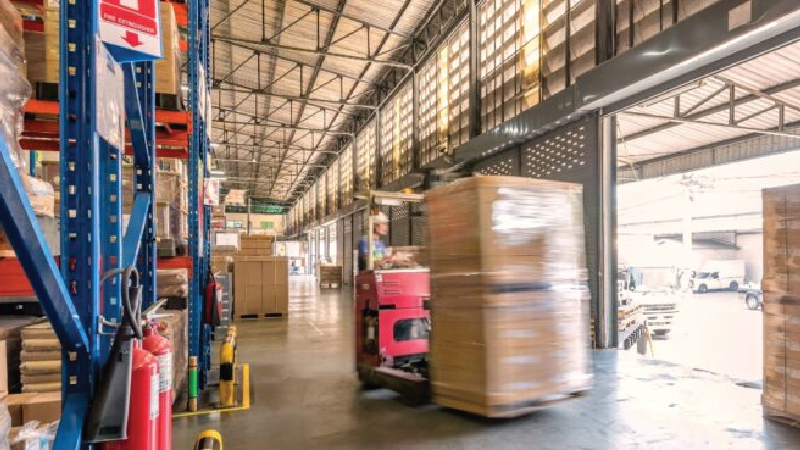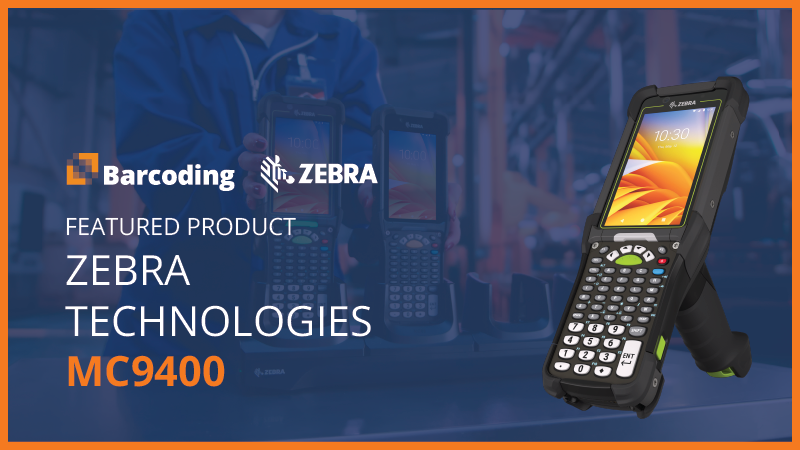Written by Steve Shaheen, CEO and Founder, DTG
With the rise of e-commerce and customer-centric return policies, modern warehouses must adapt and evolve their reverse logistics processes to effectively manage returns while minimizing revenue loss and maintaining customer satisfaction. The successful handling of returned products is critical to driving customer satisfaction, minimizing waste, and maximizing warehouse efficiency.
In this blog post, we’re taking a deep look at how reverse logistics processes function in warehouse environments. You’ll find answers to:
- What is reverse logistics?
- Why is reverse logistics important?
- How does reverse logistics work?
- What role do warehouses play in the reverse supply chain?
- What are the benefits of an efficient reverse logistics process?
- How can warehouses improve at reverse logistics management?
Keep reading to discover our best tips, advice, and insights for optimizing reverse logistics and returns management in your warehouse.
What is Reverse Logistics?
Reverse logistics is a set of warehouse operational processes for effectively managing the flow of products and materials that return to the warehouse after being delivered to customers.
Unlike traditional logistics which focuses on the forward movement of goods from suppliers to warehouses and on to consumers, reverse logistics deals with the reverse movement of products - from the consumer, back to the warehouse, and possibly back to the supplier or another designated location.
The reverse movement of products through the supply chain can happen for a variety of reasons, including customer returns, product safety recalls, warranty-covered repairs or maintenance, end-of-life (EOL) recycling, delivery failure, unsold goods, and more. By implementing an efficient reverse logistics process, warehouses can lower the cost of processing returns, recover more value from returned items, reduce their environmental impact, and increase customer satisfaction.
Why is Reverse Logistics Important?
The importance of an efficient reverse logistics process in your warehouse can be summarized in a single sentence: consumers return a lot of items.
You can calculate the Return Rate for your warehouse by dividing the number of returned items by the total number of items sold during a given period. If the business sold 100 items and had 5 returns, its return rate would be 5/100, or 5%.
The most recent available data tells us that brick-and-mortar retail stores have an average return rate of around 9%, while most online retailers experience return rates between 20 and 30%. That includes both preference-based returns (especially in the fashion segment) and defective product returns.
For warehouses supporting online retail businesses, as much as 20% or more of the total throughput of goods can come from customer-returned products. Even a relatively low return rate of 5 or 10% can represent a significant volume of returns for a busy warehouse to receive, process and triage.
An efficient reverse logistics process allows warehouses to efficiently manage returns and redirect returned merchandise in the optimal way to maximize value recovery and minimize costs.
How Does Reverse Logistics Work?
Reverse logistics encompasses the entire process of receiving returned inventory from customers and redirecting it as needed to preserve and recover its value.
To better understand how this process works, consider the 7 R's of Reverse Logistics:
1. Returns
The reverse logistics process begins when the customer requests to return an item. The customer's request may be evaluated against a Returns Policy to determine whether a return or exchange will be allowed. The most competitive online retailers offer a generous return policy and even provide their customers with return shipping labels to cover postage costs. Returned inventory has to be processed back into the warehouse storage system.

2. Replacement/Exchange
When a consumer returns an item, they may want to replace or exchange that item for something else. For example, they may have purchased clothing in the wrong size or mistakenly bought the wrong automobile part. When processing an exchange, warehouses must create a new order to pick the correct item and ship it back to the customer.
3. Reselling
After a return or exchange is processed, the best scenario for the warehouse is to process the returned item into storage and eventually resell it to a different customer.
However, this can only happen if the item is returned in near-perfect condition. Returned inventory must be carefully inspected for damage and defects before it can be stored in the warehouse with other inventory for sale. Previously sold inventory in near-perfect condition is sometimes resold in bulk or at a discount.
4. Repackaging
When a returned item has been opened but is otherwise undamaged, it may need to be repackaged before it can be sold again. Warehouses can repackage inventory to restock it in the warehouse, or send it back to the supplier to be repackaged.
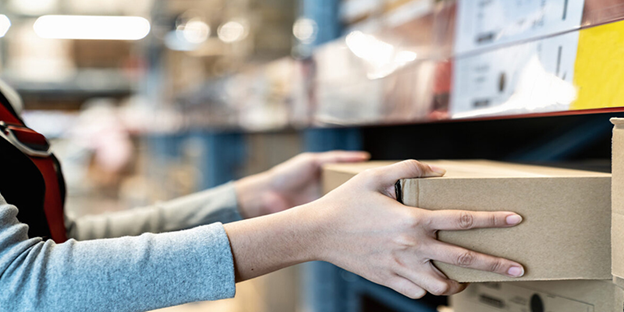
5. Repairs
Repairs are when a damaged item is fixed and returned to the same customer. Many items are sold with warranties that allow consumers to get them repaired by the manufacturer at no cost. Warehouses may facilitate this process by serving as an intermediary between the end user and the manufacturer.
6. Refurbishments
Refurbishment is when an item is restored to like-new condition so it can be resold to a new customer. Refurbishment is common in markets where consumers can trade in an older product for a rebate when purchasing a newer product (e.g. mobile phones).
7. Recycling
Some manufacturers operate EOL recycling programs where they collect and recycle their products that have reached the end of their useful life.
At the end of their useful life, consumers can ship these products back to manufacturers who will salvage any valuable components and recycle the waste in a responsible and sustainable way.
The Role of the Warehouse in Reverse Logistics
Warehouse fulfillment centers play a central role in the reverse logistics process. That role includes:
- Receiving, inspecting, processing, and triaging returned products.
- Restocking returned products that were returned in good condition and that can be resold to customers.
- Repackaging returned products that are otherwise in good condition for resale.
- Forwarding non-saleable items back to the supplier (for repair, refurbishment, recycling, etc.), or to other designated locations to recoup as much value as possible.
- Issuing refunds to customers who have returned products.
Warehouses also need to update their IT systems as they receive and process returns. This can include updating stock levels on an eCommerce website, adjusting sales data to reflect the loss of a sale, and checking/scanning the returned product back into the warehouse inventory control software system.
What are the Benefits of an Efficient Reverse Logistics Process?
1. Reducing Revenue Loss
Warehouses lose revenue each time an item is returned and a refund is issued to the customer.
An optimized reverse logistics process helps warehouses counteract that revenue loss by efficiently processing returns/exchanges and redirecting returned inventory to the optimal destinations where its value can be recovered.
That can mean restocking returned items in the warehouse, selling previously opened inventory at a discount, repackaging returned products to enable resale, or returning defective/damaged products to the supplier
2. Reducing Costs
An optimized reverse logistics process helps businesses minimize costs associated with returns.
It enables efficient handling, sorting, and disposition of returned items, reducing inventory carrying costs. By identifying root causes of returns, companies can also take proactive measures to address quality issues, minimizing future return rates and associated expenses.
3. Enhancing Customer Satisfaction
An efficient reverse logistics process ensures prompt and hassle-free returns, enhancing customer satisfaction.
Streamlined return procedures, fast refunds, and effective communication throughout the returns process foster positive customer experiences, building trust and loyalty. Satisfied customers are more likely to repurchase, recommend the brand, and maintain long-term relationships.
4. Waste Reduction
An efficient reverse logistics process promotes environmental sustainability by reducing waste. By enabling the refurbishment, resale, or recycling of returned products, an efficient reverse logistics plan can cut down on waste, extend the product life cycle and reduce environmental impact.
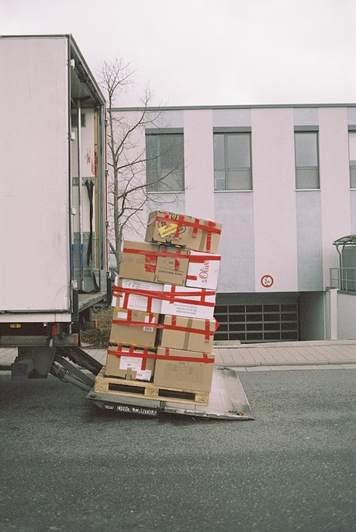
Proper disposal of hazardous materials and components ensures compliance with regulations, protecting the environment. Adopting sustainable practices not only benefits the planet, it also enhances the brand's reputation with environmentally-conscious consumers.
5. Capturing Product Data
When reverse logistics are running efficiently, organizations have the opportunity to capture data about which products are being returned and why.
Understanding which items are returned most often and the leading causes for returns can help warehouse managers identify quality issues in the supply chain, improve product offerings, recover more value from returned inventory, and further streamline the returns process.
7 Ways to Optimize Reverse Logistics in Your Warehouse
1. Implement a Customer-Friendly Returns Policy
A returns policy establishes the conditions under which your warehouse agrees to accept returns from customers. Under United States law, warehouses have to accept returns on inventory that is damaged or defective. Otherwise, warehouses and retailers can craft a returns policy to establish an acceptable time frame for returning items, what qualifies for a refund, whether to offer a refund or store credit, and who pays for return shipping.
It’s normal to offer free returns within 30 days of purchase or a customer satisfaction guarantee that entitles the customer to return products if they aren’t satisfied. Implementing a returns policy can help limit the total number of returns your business receives while ensuring that customers are treated fairly in the returns process.
2. Make Returns Easy for Customers
Being able to easily return items is extremely important for customers. Research on product returns in the eCommerce business indicates that 92% of consumers will buy from a business again if they know it’s quick and easy to return any unwanted items. In fact, consumers are substantially more likely to purchase an expensive item if they know that it can be returned.
Simple steps you can take to make the returns process easier for customers include:
- Offering a hassle-free, “no questions asked” return policy,
- Giving customers the option to return inventory by mailing it to a warehouse, dropping it off at a brick-and-mortar store, leaving it at a parcel pick-up station, or even having it picked up from their residence, and
- Providing customers with free return shipping and a printable return label to streamline the process and cover the cost of returning unwanted products.
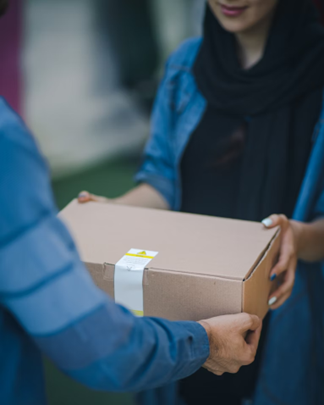
3. Streamline Your Return Processing Workflow
Managing returns is a complex process with multiple touch points along the way. Your returns processing workflow should include:
- Adjudication - Determining whether the customer should receive a refund, store credit, or a replacement/exchange.
- Customer Service - Communicating with the customer about options and expectations for the return and providing return shipping labels as needed to make the process easier.
- Product Handling - Receiving the returned inventory into your warehouse, inspecting the product to evaluate its condition and determine whether it should be resold, repackaged, repaired, or returned to the supplier/manufacturer.
- Inventory Management - Adding returned items back into inventory management systems and/or updating inventory on eCommerce websites to maintain accurate stock counts.
- Accounting - Adding returned inventory back onto the balance sheet, writing off defective/damaged inventory, reversing the original sale, and processing the refund.
Streamlining your returns processing workflow means understanding the exact steps that need to happen and integrating them into a process that’s quick and easy for warehouse staff to follow.
4. Designate Warehouse Space for Processing Returns
The higher your return rate, the more space you’ll need to allocate inside your warehouse to accommodate the flow of returned inventory.
You’ll need space to receive customer returns, a dedicated area for inspecting and evaluating returned products, a staging area for products being returned to the warehouse storage system, and a storage area for products that are being routed back to suppliers instead of into the warehouse.
5. Optimize Your Disposition Strategy
Having a strong disposition strategy is a critical aspect of optimizing reverse logistics, especially when it comes to reducing revenue loss.
For each returned item, your goal should be to recover as much revenue as possible based on the condition of the item. That means making the right strategic decisions about which items are ready for immediate resale, which items can be repackaged or repaired to enable resale, and which items should be returned to suppliers/manufacturers or sold at a discount.
6. Invest in Return Processing Technology
Investing in return processing technology empowers warehouse employees to execute the reverse logistics process faster and more accurately, resulting in lower costs and reduced waste. The best options include:
- RFID Scanners - RFID technology replaces time-consuming and error-prone data entry, allowing warehouse employees to process returns by scanning the barcode of the product.
- Inventory Control Software - Inventory control software replaces inefficient spreadsheet-based inventory management, making it easier for warehouses to update stock levels and maintain a single source of truth for inventory management. Warehouse employees can use RFID scanners to read barcodes from returned inventory and automatically update stock levels in inventory control software.
- Battery-powered Mobile Workstations - Powered mobile workstations for the warehouse bring RFID technology and inventory control software to the point of task, enabling reverse logistics teams to process returns and triage inventory with fewer errors and zero wasted steps.
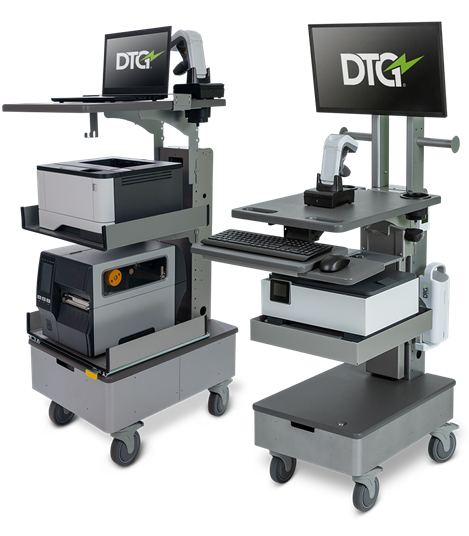
7. Measure Reverse Logistics KPIs
Warehouse managers should track KPIs and warehouse efficiency metrics to evaluate the success and financial impact of reverse logistics processes. The most important KPIs to track are:
- Return Rate (%) - A metric indicating how frequently products are returned by customers as a percentage of sales.
- Average Return Processing Time - A metric indicating the average time it takes to process a return, including issuing the customer a refund and disposing of the item.
- Average Return Processing Cost - A metric indicating the average cost of processing a return.
- Average Return Value (%) - A metric indicating the average recovered value from returned items as a percentage of the item’s normal cost.
- Return Feedback/Performance Score - A metric indicating overall customer satisfaction with the returns process. Collecting feedback from customers helps you identify bottlenecks or service gaps in your returns process and implement changes that drive customer satisfaction and retention.
Streamline Your Reverse Logistics Process with DTG Mobile Warehouse Carts
DTG’s battery-powered mobile workstations help warehouse managers optimize and accelerate every aspect of warehouse operations - from receiving and inventory management to order picking, packing/shipping, and reverse logistics.
Our durable, ergonomic Problem Solver warehouse cart is fully customizable, bringing people and essential critical technologies to the point of task and empowering warehouse staff to process returns faster with fewer errors, save time and reduce wasted steps, and enhance the profitability of your warehouse operation.
Contact us to schedule a free virtual demo and discover how you can optimize your reverse logistics processes and workflows with DTG mobile warehouse carts.

